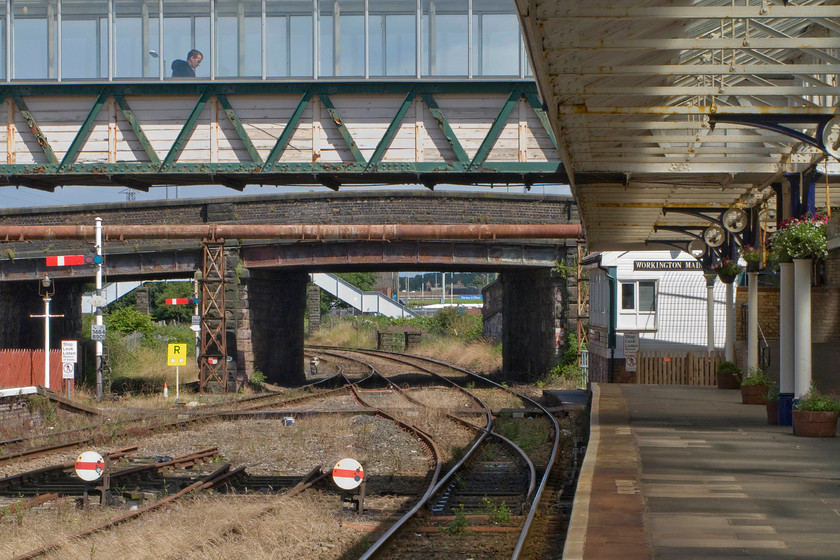|
||||
Workington and the Cumbrian Coast line for that matter remainsa bastion for mechanical signalling. Despite its limited service and few freight trains, Workington retains two signal boxes. To the north end of the station tucked in on the platform end is Workington Main No. 3 signal box, a LNWR type 4+ structure dating from 1886. It is only open during weekdays and on Saturdays being otherwise switched out. As well as controlling trains to the north of the station towards Maryport, it also enables access to the docks and other industrial sidings that are very infrequently used. |
||||
|
|
||||

